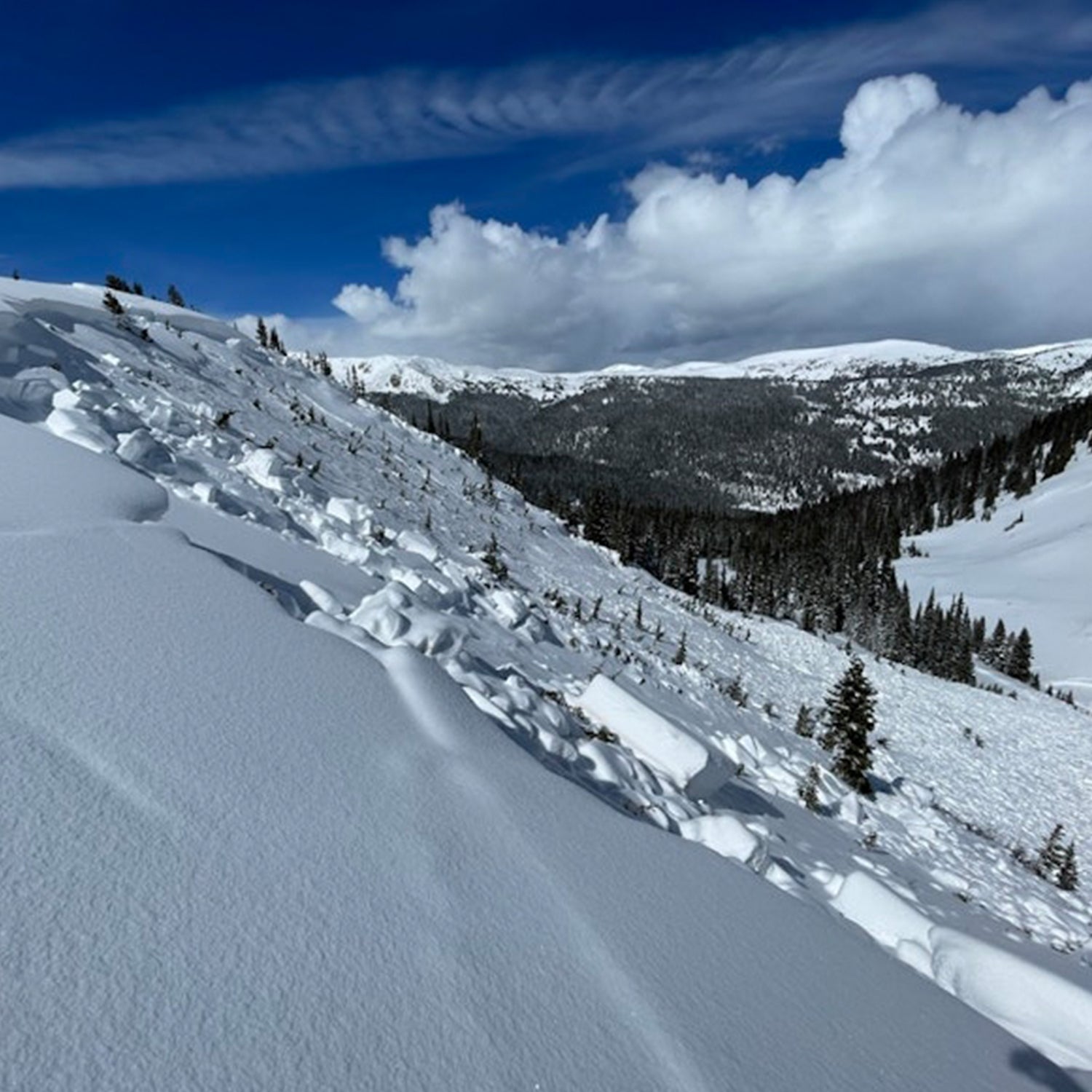Back in December 2023, Colorado was mired with a miserable snowpack. The ski resorts were barely open and a thin layer of rotten snow blanketed the surface of the alpine. Our editors speculated that once the storm door began to open and coverage improved, the pent-up demand in the country’s would lead to a high number of fatal slides.
We were wrong—well, kind of. The Colorado Avalanche Information Center recently released statistics for the 2023-24 season so far, and the numbers reflect a remarkably lucky winter for backcountry users. There have been a sizable number of human-triggered avalanches this year, and many of those slides did trap skiers and snowboarders. But as of April 12, the state has recorded just two avalanche fatalities—fewer than the annual average of six. And now, snow safety experts are trying to understand the gap between the two numbers.
“It’s a complicated knot to untie,” said Ethan Greene, director of the Colorado Avalanche Information Center (CAIC) in a video call on April 12. “Even though we’ve had only two fatalities—which is both terrible and great—we’ve had a number of cases where the margin between survival and death was really slim.”
According to the CAIC, there were 5,555 recorded avalanches in Colorado this season. Of those, 938 were triggered by backcountry users. Data suggests that 117 people were caught in those slides during the season, with 44 being partially buried and six being fully buried. Last year, the 2022-2023 season saw 5,663 avalanches, 861 of which were human triggered. In those slides, 122 people were caught, 34 were partially buried, 20 people were fully buried, and 11 were killed. The worst winter in recent memory for fatalities, however, was the 2020-2021 season, during which the CAIC recorded 4,755 total slides. That year 95 people were caught in 84 different avalanches. Of those, 20 people were partially buried, 13 were fully buried, and 12 were killed.
Greene explained that when it comes to getting caught in a dangerous avalanche, seemingly small factors—being a few feet from a cliff band or being buried under an extra foot or two of snow, for instance—can have enormous impacts on a person’s survival.
We asked Greene what he thought made a difference this year for the 117 people who were caught in slides but survived. “It’s not a very clean narrative,” he explained. “Without having hard data to back it up, it does make sense that the amount of equipment use and education is increasing in the backcountry community. There are more people now who are proficient in partner rescue and we’ve seen some really good rescues this year. It’s encouraging.”
That was the case in a miraculous rescue in the Elk Mountains near Aspenon March 6, when a snowmobiler dug his partner out of debris from a very large and destructive avalanche. A group of six unintentionally remote-triggered a slope above them, and the slide carried one of the riders into a gully, burying him under between five and ten feet of snow. The rider’s partner reached his airway within nine minutes of digging and found the victim with no pulse or respiratory rate, but was able to revive him after ten minutes of CPR. Though the buried man did not regain consciousness over the hours-long rescue, the he walked out of the ICU under his own power two days later.
But rescue skills just aren’t sufficient to produce good outcomes in all situations. An avalanche in the Anthracite Range near Crested Butte occurred on February 11 when Eric Freson, a reviewer for Blister Magazine and a pillar of the Gunnison Valley backcountry community, . The avalanche debris caused a second, larger avalanche in the snow surface below the cliff and carried Freson through the trees below. His partners reached him within eight minutes and cleared his airway, but unfortunately Freson did not survive his injuries.
Diagnosing exactly what went wrong in each avalanche incident is an extremely difficult task. Drilling in partner rescue skills will undoubtedly pad your safety margins. But don’t discount the fact that some folks are just plain lucky. “During the last few weeks we saw a number of involvements in very large avalanches. The fact that those victims survived the slides involved either very good choices or luck,” said Greene. “Many of these could have been fatalities, and luck was definitely a factor.”


